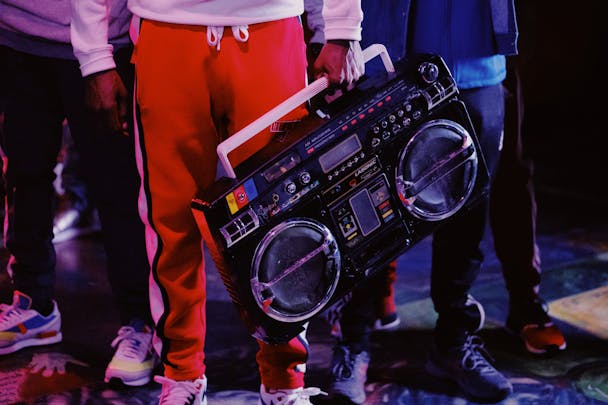Using AI to beat unconscious bias, YouTube found hip-hop ads surprisingly effective
Diageo and Domino’s used YouTube’s inventory modes to tackle unconscious bias. Here’s what we learned.

YouTube found that advertising against music delivers a 5% uplift in ad recall / Gordon Cowie
YouTube’s stats demonstrate a 5% brand recall lift when brands choose to advertise against music versus standard content. Many marketers have always assumed this but the stat is proof of music’s effectiveness in creating an appropriate context to speak to consumers.
For YouTube, which is deep into the deployment of its Shorts format, that boost is a welcome statistic to add to its sales pitch to brands. But it has encountered some unexpected issues.
As Erica Probst, head of YouTube sales UK&I, explains, there are wider issues surrounding how brands choose to advertise against music, issues related to unconscious bias among marketers.
She said: “Six out of the 10 most watched videos on YouTube are sub-genres of hip-hop. Now, although many advertisers are keen to take a closer look at representation in their media buying, there is this legacy issue of exclusions, and, you know, we see that quite prevalently on music related to genres of hip-hop specifically.”
When asked which brands have embraced hip-hop ad buys, she cites Diageo. It has used AI tools to buy YouTube ads, tackle bias and deliver significant brand uplift. The drinks brand used the tech of YouTube Select – which sources a mix of algorithmically-created advertising opportunities tailored to specific niches – the result of which was an increase in its overall reach by 59% and the opportunity to speak to a more diverse audience set.
Advertisement
Beyond the moral imperatives to tackling unconscious bias, YouTube’s research also demonstrated a commercial benefit as well. Probst explained: “Another great example of this is Domino’s, they took a slightly different approach [and] looked at keyword exclusions. They found not only were they able to deliver a more equitable distribution of media investment, they unexpectedly reduced their CPM by 50%.”
It did so by switching from keyword exclusion to the use of YouTube’s three-tiered inventory modes options, though YouTube admits the CPM change was an ‘unexpected bonus’.
YouTube’s inventory modes filter all monetized content into “three tiers of risk”, with hip-hop the most excluded music category on the platform when it comes to media buying. Brands can then pick which tier best aligns with their brand.
YouTube Shorts and fortunes
The uplift from musical content is also good news for YouTube, which launched its short-form video format Shorts in 2020 to capitalize on similar demand on rival video platforms. Since then 1.5 billion users have logged into the Shorts platform on a monthly basis and it recently launched its own creator payments scheme.
Probst says that Shorts is both a unique proposition and an integral part of YouTube’s wider advertising strategy: “[We are] a unique platform, able to deliver advertising on the TV and on mobile seamlessly with frequency control. That plays a huge role in our multi-format strategy.
“Whether you’re wanting to digest long-form content, or whether you're on Shorts… we’re using AI to optimize advertiser's campaigns. So with a very small number of creative formats, we can let Google's AI technology really optimize that marketing performance.”
YouTube’s advertising revenue for the fourth quarter of 2022 decreased by 7% compared to the same period in 2021. While that lines up with the wider headwinds that are hitting digital advertising platforms, there is also the issue that brands are switching a proportion of their ad spend to rival platforms including TikTok.
Probst believes that YouTube’s range of ad formats and the ability to deliver those advertising opportunities across mobile, TV and desktop are its major point of differentiation – and that, combined with inventory, modes a further opportunity that its competitors cannot replicate as a result.
She said: “It’s going back to that point of ‘this not only helps you reach more audiences and take a more inclusive approach, it also helps your effectiveness or your impact as an advertiser’. [What] I can get out is this idea that the work demonstrated by Diageo and Domino’s show that reach, representation and media buying go hand in hand. And that together, there’s a clear benefit for marketing effectiveness.”
With all the talk around revolutionary AI in the market at the moment, the ability of tools like inventory modes to incrementally and consistently improve ad effectiveness is being slept on. Even insights like the fact that advertising against music increased ad recall by 5% can make a tangible difference to brands’ strategies and all the more so when it tackles unconscious bias.

